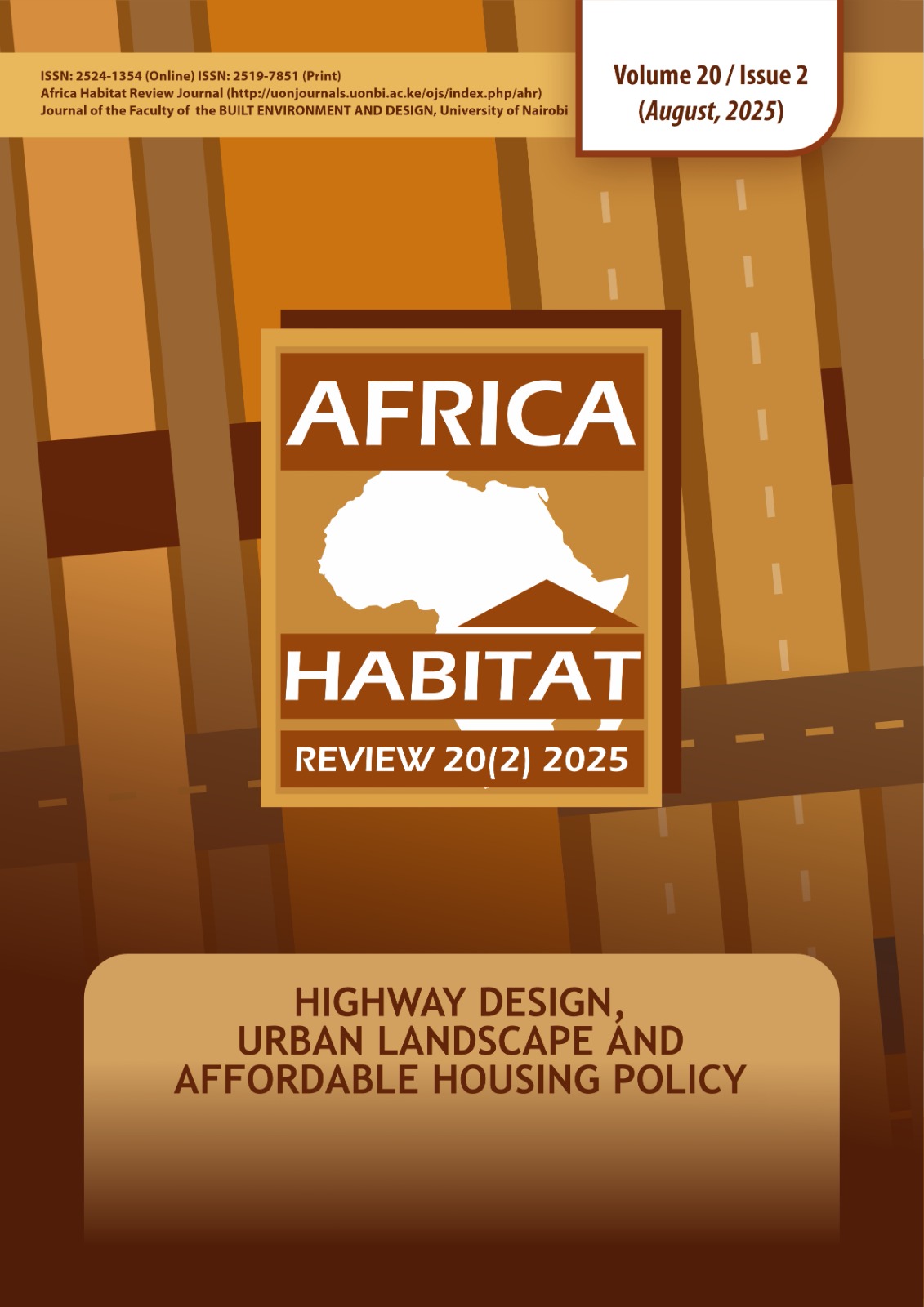Performance Comparison of SUPERPAVE and Marshall Asphalt Mix Designs in Relation to Kenya’s Climatic Conditions
Abstract
This study examines the effectiveness of asphalt mixes designed using the Marshall and Superior Performing Asphalt Pavement (SUPERPAVE) methodologies, assessing their suitability for Kenya’s diverse climatic conditions and traffic demands. A comprehensive characterisation of materials, including asphalt binders and aggregates, was conducted to ensure compliance with design criteria, followed by performance analyses comparing the two mix design approaches. Laboratory evaluations of hot mix asphalt (HMA) samples focused on key mechanical properties, including indirect tensile strength, Marshall stability, rutting resistance, and moisture susceptibility, to determine their viability for Kenyan road infrastructure. The findings indicate that incorporating Styrene-Butadiene-Styrene (SBS) into 60/70 penetration-grade bitumen substantially enhances strength, thermal stability, and structural integrity, making it highly suitable for high-traffic, high-temperature environments. SUPERPAVE-designed mixes outperformed Marshall mixes by optimising binder content, reducing asphalt usage, and significantly improving resistance to moisture damage, rutting, and long-term deterioration. Marshall stability and indirect tensile strength tests indicated higher initial strength values in SUPERPAVE mixes than Marshall mixes, and they were also more durable following moisture conditioning. Additionally, rut depth analysis confirmed that polymer-modified bitumen enhances rut resistance in SUPERPAVE HMA, outperforming neat bitumen. The study verified that the tested aggregates conform to relevant standards, reinforcing their suitability for high-performance asphalt applications. Given these findings, the study strongly advocates adopting SUPERPAVE as Kenya’s climate-responsive, performance-driven pavement design system. It emphasises the need for targeted capacity-building through specialised training programmes, pilot projects with performance monitoring, and economic feasibility assessments integrated with policy advocacy to facilitate its implementation. Furthermore, it calls for developing Kenya-specific binder and aggregate selection standards using the Performance-Graded (PG) system, enforcing stringent quality assurance protocols, and making necessary updates to national road design standards. By prioritising long-term cost efficiency and pavement resilience, the study emphasises the importance of fostering collaboration and knowledge exchange among industry stakeholders, ensuring sustainable advancements in Kenya’s road infrastructure.


